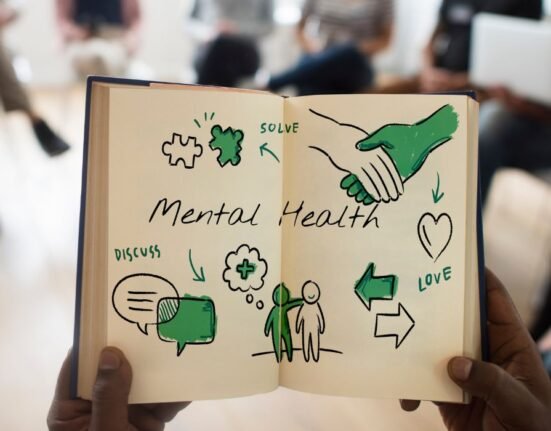Do you sometimes experience a sense of dread before a test or exam? Do you feel your heart race and your hands get clammy before an important interview or before you have to speak publicly? This looming sense of dread is labeled as anxiety and it is experienced by all of us to some degree. Some might describe anxiety as an aspect of life that came into existence before the concept of evolution.
But how much anxiety is too much? What happens when this feeling of anxiousness starts interfering with your daily routine? Anxiety is often misunderstood and disregarded by the common population as something that will fade away easily. However, such is not the case and, in a study from India, 14.5% of adolescents were found to be suffering from anxiety disorders (Sri, 2002).
This article explores the fundamental aspects of what anxiety is and how it can impact your daily life. It discusses the complexities of anxiety and keeps in mind those who may be unfamiliar with the topic.
Also Read: Living Beyond Anxiety: Empowering yourself to Embrace Life fully
The Universal Experience of Anxiety
The root word origin of anxiety is from the Latin word “anxietas.” It means to choke, be upset, or be troubled. But these meanings do not cover the complete nuance of anxiety.
To put it simply, anxiety is like a built-in alarm system in our minds. This alarm system is responsible for that feeling that pops up when you are just about to check your exam results, the unease you feel on your first date, or your first day at a job. This feeling is a way to cope with and respond to challenging and stressful situations. But it goes without saying that too much of anything can cause a problem. When this anxious feeling overflows, or goes into overdrive, it throws us out of balance. It starts interfering with our daily routine and makes functioning difficult. This is usually when you start experiencing it for no apparent reason or when it’s way too intense for a very long time.
Also Read: Ways to Maintain Well-being during Exam Season
Expanding on the alarm system example, it’s like the alarm is constantly ringing in your brain and this can be exhausting. It’s like an unwanted colleague that is lurking in the shadows. This disrupts not only our daily routine but also our social life and important relationships and also how our bodies function.
Symptoms
The occurrence of anxiety in life is not easy to detect since it is not a one-size-fits-all. It exists in several forms, from Generalized Anxiety Disorder (GAD) to Social Anxiety Disorder. By now, you must’ve understood that it’s more than just a feeling of stress or nervousness. It’s a combination of both psychological and physiological factors. You can detect if your anxiety is severe by keeping track of the following symptoms. These symptoms can vary widely from person to person, but some factors unite them. When anxiety takes hold of you, your body is on high alert. This triggers your fight-or-flight response.
You may then experience,
- Nervousness and Restlessness: A sense of unease that makes it challenging to relax.
- Panic and Sense of Dread: Sense of looming doom and overwhelming fear.
- Increase in Heart Rate: A rapid heart rate as your body prepares for action.
- Hyperventilation: Shallow breathing or difficulty in breathing, which often causes dizziness or lightheadedness.
- Sweating: Your body sweats profusely and suddenly ( eg., clammy hands).
- Trembling: Your muscle twitches and leads to involuntary muscle movements or shivering.
- Weakness and Lethargy: Feeling physically drained and tired because you’ve been on high alert for a long time.
- Difficulty Focusing: An inability to concentrate on any other areas of life except the source of your worry.
- Insomnia: Difficulty to sleep.
- Gastrointestinal Problems: Digestive Issues like gas, constipation or diarrhoea.
A wide range of anxiety disorders that encompass a wide spectrum exhibit these symptoms. Each of these disorders has unique characteristics.
- Specific Phobias: Intense fear and unreasonable fear of particular objects or situations that may lead to panic attacks.
- Separation Anxiety Disorder: Anxiety related to separation from caregivers, primarily seen in children. In rare cases, it can also persist in adulthood.
- Selective Mutism: An inability to speak in specific situations or places, typically affecting children.
- Post-Traumatic Stress Disorder: Occurs after a traumatic event and is characterized by flashbacks and hypervigilance.
- Obsessive-Compulsive Disorder (OCD): Characterized by intrusive distressing thoughts and repetitive behaviours aimed at reducing anxiety.
- Generalized Anxiety Disorder (GAD): Persistent and excessive worry about everyday activities. This is also accompanied by physical symptoms.
Seeking Help and Breaking the Stigma
We have seen how anxiety can manifest in several ways and how it can impact our daily lives. It’s a reminder that beneath the surface, many individuals are navigating the complex maze of thoughts and emotions daily. According to the National Mental Health Survey (2019), 38 million people suffer from anxiety disorders in India.
Also Read: Food that helps to fight anxiety
It’s important to learn and recognize when to seek professional help. This is an essential step in overcoming anxiety. This becomes increasingly difficult due to barriers like stigma and limited access to mental health resources. Self-reliance is often promoted in society and it prevents candid discussions and open conversations on mental health. This further perpetuates the cycle of suffering in silence.
If anxiety significantly starts interfering with everyday routines and even leads to feelings of depression, overwhelming sadness, or any physiological health issue, it becomes important to consult a healthcare provider.
Conclusion
Recovering from anxiety is a journey and requires patience and persistence. A lot of things need to be taken into consideration on this journey. Lifestyle changes, regular exercise, inhibition from alcohol and caffeine, engaging in relaxation techniques maintaining a healthy diet, and getting adequate sleep, all contribute to a healthier mental state. Additionally seek support from friends, family, and if needed, support groups. These serve as crucial assistance in the recovery process.













Leave feedback about this